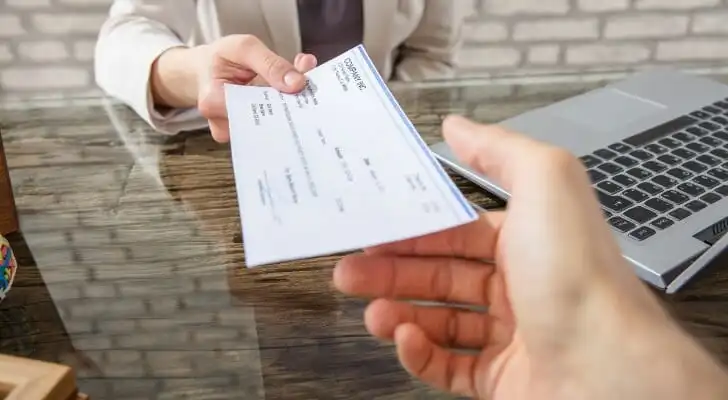Sometimes you’ll need to transfer money from one bank account to another, such as in managing a monthly rent payment or moving funds from an old account into a new high-interest savings account. You have a few ways to move your funds, and you might not even have to leave the comfort of your home to do it. Like most things today, there are more digital options than ever. Here are some ways to transfer money from one bank account to another, so you can determine which method is best for your situation.
If you’re looking for some of the top savings accounts on the market, check out SmartAsset’s list of the best savings accounts.
What Is a Bank-to-Bank Transfer?
Bank-to-bank transfers move money from an account at one bank to an account at another bank. Many institutions allow you to perform bank-to-bank transfers through a mobile app or website. You can also do a bank-to-bank transfer by calling the institution or visiting a branch. Transfers may be between accounts you own or to a third party, such as a vendor.
Four Things to Consider Before Transferring Money
Bank-to-bank transfers are generally simple and easy. However, there are some requirements and considerations to keep in mind:
- Have all the required information. This may include account number and bank routing number as well as, sometimes, the name and address of the receiving bank. You may need email and phone number of the recipient if you are transferring to a third party.
- Know how long the transfer will take. Transfers may occur virtually instantaneously, but it could take days in some circumstances.
- Evaluate the fees. Many transfers involve no transaction costs. But it depends on the method. A wire transfer may involve a noticeable fee.
- Don’t exceed limits. Transfers may be subject to a maximum amount per transaction or per day.
Information You Need in Order to Transfer Money
Depending on how you transfer money, there are some basic pieces of information you should have on hand. For starters, you need to know how much you want to transfer, and you need to make sure that your account has enough money to cover the transfer. If you try to use money that you don’t have, the transaction may not go through. Even if it does, you may have to pay a fee, such as an overdraft fee.
You should also know the account numbers and routing numbers for both your bank and the bank where you are sending the money. If you don’t know those numbers, there are a few places you can look. The first is to get your account number and routing number from a check. Of course, this will be difficult to do if you’re transferring money to someone and they don’t have a bank account.
The routing number is the nine-digit, left-most number along the bottom of a check. Your account number is the center number along the bottom of your check. You should also be able to find these numbers through your online banking account. Additionally, you’ll need to know the name and address of your bank and the bank you’re sending it to.
Here are the five most common ways to transfer money from one bank account to another:
1. Cash
A lot of banking today is digital, but you can still transfer money with a simple cash transfer. Withdrawing and depositing cash doesn’t always make sense, like when you’re moving large sums of money, but it could be a simple and free option in some circumstances. Cash could also be a good option if you need to move the money immediately.
To avoid fees, your best bet is to withdraw money in person at your local bank or credit union branch. If you use an ATM, your bank or the bank that owns the ATM may charge you a transaction fee.
2. Checks

A check is another simple way to transfer money. The best checking accounts also provide you with free checks. To move money via check, you simply need to write a check and then deposit it at the other bank. The rise of mobile check deposit also means that you probably don’t have to visit a bank to deposit a check.
Checks work whether you’re depositing into an account you own or whether you’re sending money to someone else. The one thing to note is that checks are not a good option if you need to move money as quickly as possible. It may take a few days or even a week after you deposit a check for the funds to transfer.
Checks aren’t as popular as they used to be, so if you need a quick refresher, here’s how to write a check.
3. Bank-to-Bank Transfers
If you need to transfer money between two accounts that you own, a bank-to-bank transfer could be a good option. This is a digital payment that typically works as an ACH payment. (If you’ve used direct deposit or paid your credit card bill online, you’ve used ACH, or automatic clearing house, payments.)
Many banks allow free bank-to-bank transfers if you’re sending to another account that you own. You’ll just need to link the two accounts. You can usually do this through your bank’s online banking platform. Some banks, especially those without a big online presence, will require you to call or visit a branch.
To link two accounts, you’ll need the account numbers, routing numbers and proof that you’re the owner of both accounts. Once you create the link, you can then send money easily between the two banks.
It’s important to note that bank-to-bank transfers can take a few days to process.
4. Wire Transfers
If you’re transferring money to someone else’s account and you want to do it quickly, a wire transfer could be an option. Depending on when you send it, the funds will arrive at the other bank on the same day or within one business day. As mentioned above, you’ll need the account and routing numbers for your bank and the bank where you’re sending the money.
Wire transfers are also an easy way to send money internationally. To make an international wire transfer, you’ll need the same information plus a SWIFT code, National ID or IBAN number of the receiving bank. If you’re sending the wire transfer online, you should be able to find this number by searching with the receiving bank’s name and address.
The drawback to a wire transfer is that you’ll have to pay a fee. The fee typically ranges from about $10 up to $40, though at most places it will be on the higher end of that range.
5. P2P Apps
Today, there are a number of apps with the sole purpose of helping you transfer money. Also called P2P payment services, these apps have become a very popular way to send small amounts of money quickly. Two of the biggest services are PayPal and Venmo. Many banks have also started offering P2P services, like Zelle.
If your bank offers one of these services, you may not need to create an account. It’s included in your bank account. For the most part, though, you’ll need to create an account and link it to your bank account. The person receiving your payment will also need to have an account in most cases. Apps may give you the option to send payments by linking a credit card instead of a bank account. However, this usually comes with a fee.
Bottom Line

There are multiple ways to transfer money from one bank to another. To determine the type of transfer that you’ll need, consider fees, processing time, security, verification and other factors. You should also think about where you’re sending the money, and whether or not you own both accounts. If you’re moving money to someone else’s account, consider a wire transfer. It will come with a fee, but it’s quick and also works internationally. If you’re regularly sending small amounts to other people, you may want to go with an app like PayPal, Venmo or Zelle. Finally, double-check the account numbers, and make sure you send money to the right account. If you send it to the wrong account, it could be difficult or even impossible to get it back.
Tips for Maximizing Your Savings
- One of the best ways to save money is to spend less. This isn’t always easy, but you can help yourself by making a budget. At the very least, a budget will show you where your money is going. That knowledge will help you align your spending with your goals.
- A simple way to boost your savings is to have a savings account with a high-interest rate. Banks like Ally or Synchrony could help make your money work for you with online and high-yield savings accounts.
- A financial advisor can also help you create a financial plan. SmartAsset’s free tool matches you with vetted financial advisors who serve your area, and you can have a free introductory call with your advisor matches to decide which one you feel is right for you. If you’re ready to find an advisor who can help you achieve your financial goals, get started now.
Photo credit: ©iStock.com/simonkr, ©iStock.com/AndreyPopov, ©iStock.com/Tatomm
